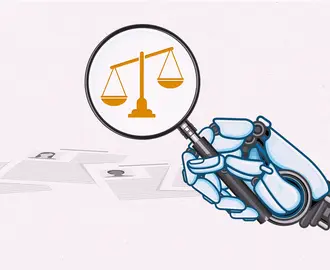Credit: Jennifer Derch
As more and more companies realize the power of data to inform business decisions, predict customer behaviors, and drive transformative technologies like machine learning and predictive analytics, chief data officers are under pressure to build a data-driven culture.
“Whether data can realize its full potential … requires companies to have a strong focus in embedding data into every aspect of their culture and processes,” said Robert Audet, data management director at Guidehouse, a technology consultancy.
For many firms, that can involve “a big change of perspective,” said Audet, who moderated a panel on data-driven culture at the MIT Chief Data Officer and Information Quality symposium held in July.
How to orchestrate that change? Here is advice from three panelists, all veteran data executives, who helped foster a new data mindset in their organizations:
Articulate the relationship between data and business operations
“The data culture cannot stand by itself; we have to figure out how it fits into the overall organizational culture,” said Katherine Tom, CDO of the Board of Governors of the Federal Reserve System.
While the term “data-driven culture” was useful “to veer people away from using their gut feelings to make business decisions,” she said she now prefers the phrase “business-driven data culture” — which emphasizes that data is an integral part of business operations and processes.
“Data alone doesn't get us that far,” she said. “The key is thoughtful business-driven data usage which enables us to extract insight that we can use to make business decisions.”
Correct the misperception that data is just for techies
Related Articles
“I think that one of the biggest obstacles is that data is very often linked to or perceived as something which is purely technical,” said Samir Boualla, CDO at ING Bank France. “The biggest challenge is to explain and give examples that bring data out of that technology perspective and into a business perspective.”
Boualla likes to use the analogy of weather forecasts we all use to plan our day. “We integrate that information, deciding whether to wear a coat or take along an umbrella,” he noted. “It's not just an output from a [technical] system, it’s something I can use in my day-to-day decision-making.”
Katherine Tom agreed that data scientists should explain technical concepts in business and layperson language. “I would like to see our data professionals speak multiple languages,” she said. For example, when a business person asks what data governance is, she makes it simple.
“I tell them to think about data governance as a group of activities or business procedures that can make their management of data easier and better. That's all.”
Show how data solves problems at all levels of the organization
As only the second CDO at U.S. Citizenship and Immigration Services, Elizabeth Puchek built credibility by conducting listening tours throughout the organization “to figure out how to connect the data to the mission.”
Her team identified a data-transfer process they could dramatically improve, decreasing the time it took from hours per day to minutes, which won credibility with employees in the field, Puchek said.
Her staff won the attention of business leaders by solving a high-level problem concerning backlog of cases.
Puchek’s team built enterprisewide dashboards that brought data together from various sources to provide insight, helping leadership better understand the composition and cause of the backlog. “Leadership had never had that enterprise perspective before,” she said. “It gave them new perspective on the problem.”
This, in turn, filtered down to the rank and file. “One of our very data-driven leaders pushed out access to the dashboard to every single [case] adjudicator so that they could see their efficiency on a daily basis. Now they know their individual impact on achieving the agency's mission.”
That anecdote exemplifies the role that communications plays in guiding businesses to use data to its greatest potential. “CDOs are the glue that connects the dots and builds the bridges to understand and address data challenges,” Audet said. “The mastery of communications is critical to success.”



